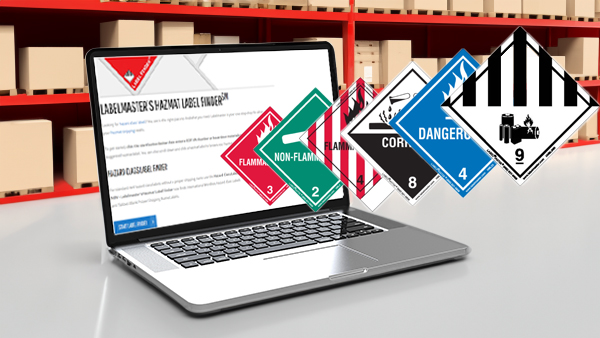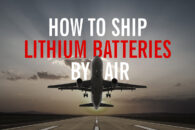In the fast-paced world of Dangerous Goods (DG) compliance, selecting the proper shipping label is essential. Without the right labels, DG shipments will be rejected by regulatory authorities and carriers, creating harmful supply chain delays. However, finding the proper label isn’t always quick or easy. In fact, with numerous label options across nine hazmat classes,…
How to ship lithium batteries by air—in 2022 and beyond
Since 2016, when the International Civil Aviation Organization (ICAO) implemented drastically more restrictive global regulations on shipping lithium batteries by air, shippers have adapted and done their best to comply. Meanwhile, regulatory agencies continue to update regulation in an effort to keep lithium battery transport by air as safe as possible. The most recent change…
New opportunities for hazmat shippers in India: Pando integrates DGIS
If you work in the Dangerous Goods supply chain, you’ve probably heard something like this before: “The challenge our customer faced was one where the packing and transportation systems were siloed. The systems didn’t really talk to any of their upstream or downstream systems. They managed Dangerous Goods on Excel sheets. The problem in front…
What will lithium battery shippers do without Section II Packing Instructions?
On January 1, 2022, the new, 63rd Edition IATA Dangerous Goods Regulations will take effect. One of the most significant changes from previous regulations is that Packing Instructions PI 965 and PI 968 have been revised to remove Section II. Readers of this blog will now likely have one of the following reactions: What the…
Everything you need to know about MSDS-SDS conversions
Sometimes, we overlook the obvious. I was working with a client just last week and was asked to evaluate a pair of materials for further handling at a new site they are developing. “Will you please send me the Safety Data Sheets? I’ll take a look and run the numbers,” I said. A few minutes…
South American hazmat rules are newly harmonized. Are you trained up?
Those of us in the North American Dangerous Goods supply chain may complain about the complexity of hazmat regulations, but lots of us don’t know how good we have it. After all, we only have to worry about one set of UN Model Regulations. Sure, there may be slight, unharmonized differences between Europe and North…
What are operator variations, and how do they impact your hazmat shipments?
The IATA Dangerous Goods Regulations manual—known throughout the supply chain as the “IATA DGR”—is universally acknowledged as the world’s single authority on the compliant transport of hazardous materials by air. It’s more than 1,000 pages thick. Surely IATA has issued every rule any shipper would need to know, right? Not quite. There’s a whole chapter…
DG Digest: EU notifies of proposed amendments to the ADR
The week that ended with the Independence Day holiday finds the US continuing its battle with the novel coronavirus outbreak. Let’s all keep moving forward and doing our best to help mitigate the outbreak. The week was very quiet in a regulatory sense, perhaps typical of summer holiday periods. Our friends in the EU kept…
Hazmat Quizmaster: Do you know how to ship lithium batteries by air?
KEEP YOUR LITHIUM BATTERY SHIPMENTS COMPLIANT Lithium batteries are hazmat, and the regulations for shipping them change often. Keep your shipments safe and compliant with a complete line of lithium battery resources from Labelmaster. Make sure your shipments are safe and in complete compliance with a full line of solutions from Labelmaster—a full-service provider of goods and services for hazardous materials…
Why the new lithium battery test summary rules are nothing to stress out about
On January 1, 2020, a new regulation goes into effect that will impact every organization that manufactures or distributes lithium batteries and/or the equipment they power. These companies will be required to share information, known as a “test summary,” that proves their batteries meet the testing standards as defined in sub-section 38.3 of the UN…









